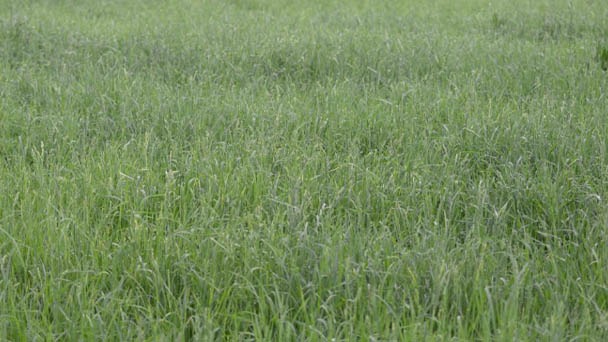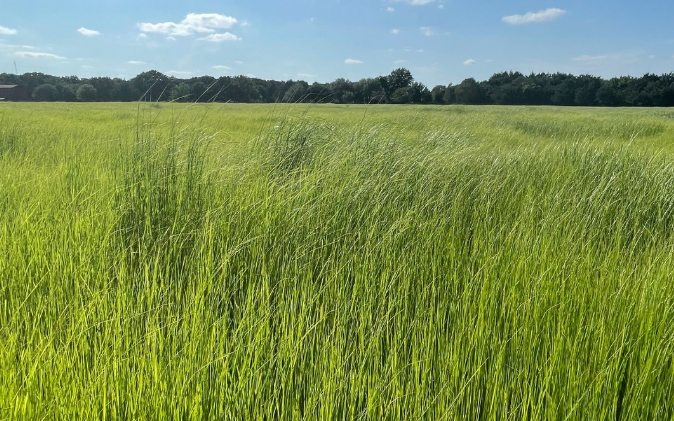How to Plant Teff Grass - Is It Good for Pasture?
Written by Ivy
Dec 28 2022

The science of managing soil, cultivating land, and growing crops is known as agronomy. Teff grass is being planted as cover crops, and agronomists are discovering many advantages to doing so. Learn more about teff grass and how to grow it as a cover crop by reading on.
What is Teff Grass?
The ancient grain crop known as teff grass (Eragrostis tef) is believed to have its roots in Ethiopia. In Ethiopia, between 4,000 and 1,000 BC, it was domesticated. This grass is ground into flour in Ethiopia, where it is fermented and made into enjera, a sourdough-style flatbread. Additionally, teff is used in the brewing of alcoholic beverages and as a hot cereal. Straw is employed as animal feed and, when mixed with mud or plaster, is also used in the construction of buildings.
This warm-season grass has grown to be a valuable summer annual forage for livestock and commercial hay producers in the United States who require a crop with quick growth and high yield. Teff grass is being grown by farmers as a cover crop. Teff grass cover crops produce an excellent plant structure that doesn't leave the soil lumpy for succeeding crops and are effective at suppressing weed growth. The most popular cover crops in the past were buckwheat and sudangrass, but teff grass has advantages over those alternatives.
For starters, sudangrass needs to be mowed and buckwheat must be controlled once it matures. Teff grass needs to be mowed occasionally, but it requires less maintenance and doesn't produce seed, so there are no unwanted offspring. Teff is also more resistant to dry conditions than either buckwheat or sudangrass.
How to Grow Teff Grass
In a variety of settings and soil types, teff thrives. Teff should be planted after the soil has warmed to at least 65 F. (18 C.) and temperatures of at least 80 F. (27 Teff needs a firm seedbed in order to germinate because it grows on or very near the soil's surface. Plant seeds no deeper than 6 mm (¼); of an inch).). Send out the tiny seeds between late May and July. Retain the seedbed's moisture.
Teff thrives in a variety of soil types and environments. Teff grows best when the soil reaches a temperature of 65°F before rising to at least 80°F during the growing season. Teff has been known to completely die when temperatures fell below 32oF because it is very sensitive to cold and frost. Teff should be sown with a shallow depth of between 1/8 and ¼ inch on a firm seedbed. A stand failure is very likely if seeds are sown deeper than ½ inch. This shallow seeding can be difficult, though. At Dakota Lakes Farm, teff is sown more deeply, filling the trench's base with seed while leaving the top of the trench open. Teff seed is small, with a seed count of 1.14 million to 1.50 million uncoated seeds/lb, and surface seeding is possible if there is enough moisture. With 1.8 million uncoated seeds per lb in 2013, the seed count at Dakota Lakes Farm was even lower. The typical recommendation is to seed at a rate of 4–8 pounds per acre. Teff produces a lot of tillers (see image 1). Teff germinates quickly, taking 3 to 5 days, when the temperature and moisture are favorable. The establishment of the roots takes up the first two weeks after germination, so it's important to consider weed competition when planting a crop.

When is the First Cutting of Teff Grass
Teff is typically first cut between 45 and 55 days after planting, at the early boot stage. Following cuttings are typically harvested every 28 days. Hay yields from a single harvest can range from 1.5 to 2.5 tons per acre, with quality on par with that of other forages like timothy grass. Teff is very safe to feed to livestock, with little risk of prussic acid poisoning or nitrate buildup. When using improved forage type teff varieties, summer yields have ranged from four to seven tons per acre of dry hay. Teff can be used as grazing material, silage, or dry hay for harvest.
Read more about grass lawn care:
- How to Fix Your Burnt Grass - Get Your Lawn Green Again
- How to Make Your Grass Green Fast & Naturally
- Real Grass vs Artificial Grass - Differences & How to Choose
- How Long Does It Take for New Grass Seed to Germinate?
- Will Watering Dead Grass Bring It Back - Dead Grass Reviving
- How To Fix Yellow Grass to Green Fast - Ways & Tips
- How To Revive Dead Grass and a Dead Lawn - What to Avoid
- How Short To Cut Grass for Winter Care - Everything You Should Know
What Are Other Possible Uses/ Reasons to Plant Teff?
- As an emergency forage or rescue crop
- To supplement hay during the ‘summer slump' months
- For double cropping following cereal grain like wheat
- As a rotational crop following alfalfa
- As a green manure crop
- For soil erosion control
- To make use of field corners for those with center pivots
- To extend production months of an old alfalfa stand
FAQs
How to Grow Teff Grain
In mid-May through June, teff grass should be planted. In order to improve seedling emergence when soil temperatures are above 55 to 65 degrees Fahrenheit, later plantings are recommended because it is extremely sensitive to cool soils and frost. Seeding depth is crucial because the seed is incredibly small.
What is the Teff Grass Seeding Rate
Seeding rates are 8 to 12 coated pounds per acre or 4 to 6 raw pounds per acre at a seeding depth of 1/8 to 1/4 inch. Planting deeper will typically result in a total stand failure. Planting after small grains may also result in stand failures if the stubble is not fully incorporated into the soil.
What Are the Teff Grass Water Requirements
Between first and second cutting, teff requires 1.0 inch of water to survive at the three locations. For each ton of forage yield at these three locations, second cutting teff requires an additional 5.5 inches of water.
When to Cut Teff Grass
Teff grass has traditionally been grown primarily for hay. The fine stems and leaves make it a very palatable hay crop that should be harvested when the plants reach a height of 15 inches. To enhance teff grass regrowth, it is crucial to leave 4-5 inches of stubble height.
How Fast Does Teff Grass Grow
Under optimal growing temper- atures and moisture, Teff germinates quickly and is ready for early boot stage harvest in 45 to 55 days after seeding.
What is the Teff Grass Toxicity
Teff is extremely safe for livestock consumption, with little potential for either prussic acid poisoning or nitrate accumulation. Improved forage type teff varieties have produced summer yields of four to seven tons of dry hay per acre. Teff can be harvested as dry hay, silage, or even for grazing.
Latest Updated
- Benefits of Bugleweed - 7 Science-backed Health Benefits
- Bugleweed Dangers & Side Effects - Is It Poisonous?
- How to Plant Evergreen Trees - What You Should Know
- When to Plant Evergreens - Grow Guide for Evergreen Trees
- 12 Wonderful Evergreen Shrubs for Your Garden
- 12 Popular Evergreen Plants with Pictures for Beginners
- When And How To Prune A Lilac Bush Like a Pro
- How to Grow & Care for Lilac Vine (Hardenbergia Violacea)
- Japanese Lilac Tree (Syringa Reticulata) Care & Propagation Guide
- Shumard Oak Pros and Cons - What to Know
Popular Articles
- Winter maintenance of Antirrhinum Majus
- How to Grow Terminalia Mantaly Tree
- How to Grow and Care for Crossostephium Chinense
- How to grow Antirrhinum Majus in spring
- Peristeria Elata (Dove Orchid) Profile: Info & Care Guide
- Underwatered Snake Plant (Sansevieria Trifasciata) - Signs And How To Fix
- How to Care for Brazilian Jasmine Plant (Mandevilla Sanderi)
- How to Grow & Care for Graptopetalum Purple Delight in Summer
- Rosa Chinensis (China Rose): Plant Growing & Care Tips
- How to Care for Baby Sun Rose (Aptenia Cordifolia)